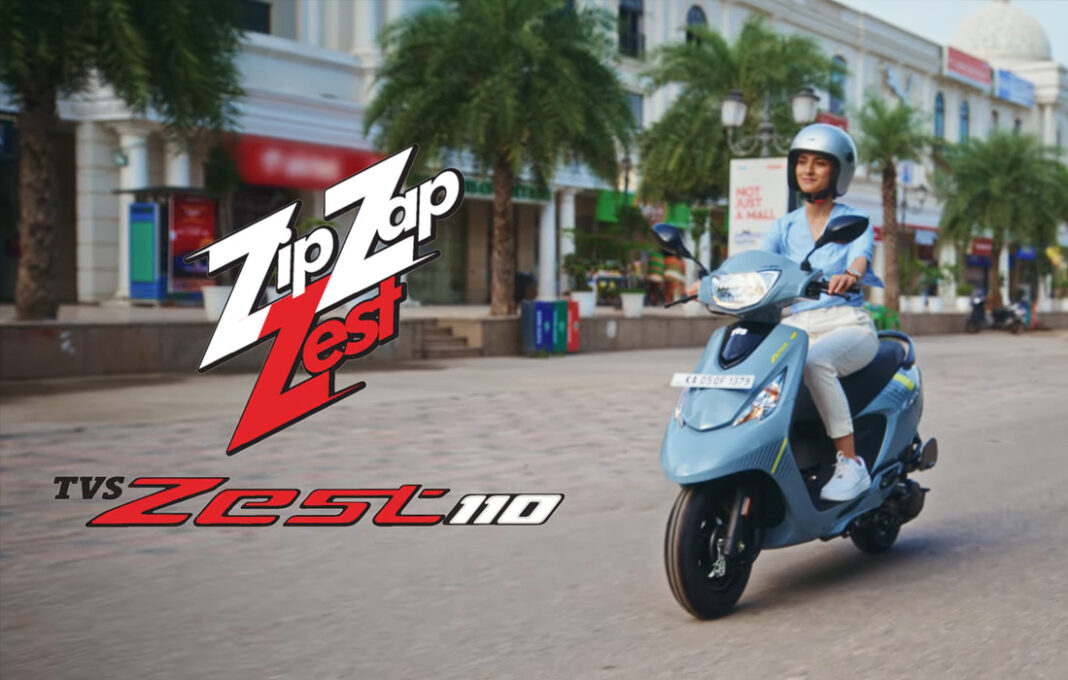TVS ZEST AND LOWE LINTAS REIMAGINE CITY RIDING AS A BALLET IN
TVS Zest’s new campaign by Lowe Lintas transforms everyday traffic into a graceful ballet, portraying the scooter as a lightweight, effortless companion for urban riders. With fluid visuals and a poetic narrative, the film positions Zest as a symbol of ease, freedom, and elegance amid the chaos of city commuting.
In a city where every red light feels like a test of patience and every morning commute becomes an unpredictable maze, TVS Zest has decided to rewrite the choreography. Its new campaign, created by Lowe Lintas, turns the routine struggle of navigating traffic into something far more graceful. Instead of portraying city roads as chaotic and stressful, the film imagines them as a grand stage — with the rider gliding through it all as though performing a beautifully composed ballet.
The campaign builds on TVS Zest’s long-standing positioning as a nimble, lightweight, easy-to-ride scooter designed especially for urban mobility. But this time, the brand leans deeper into emotion and aesthetics. Rather than relying on hard specifications or functional claims, the film captures the feeling of weightlessness — the sense that even when the world moves in unpredictable directions, the rider remains composed, confident, and effortlessly in control.
What stands out instantly is the visual language. Lowe Lintas opts for airy, fluid movements that contrast sharply with the usual depiction of tightly packed city streets. Cars, buses, and fellow riders become part of a coordinated dance, moving around the protagonist instead of encroaching on her space. Every turn, every signal, every glide feels almost orchestrated. The scooter doesn’t simply navigate the road; it floats, pirouettes, and sways with the kind of ease that suggests mastery without effort.
This metaphor of “traffic as ballet” taps into a deeper insight about the target audience. For many young urban riders, especially women, the daily commute is not just about reaching a destination but also about reclaiming autonomy in spaces that often feel overwhelming. The Zest becomes a companion that brings back joy into mobility, suggesting that control and elegance don’t have to be opposites. The ad positions the scooter not merely as a vehicle, but as an extension of one’s own rhythm — something that moves with you rather than against the city’s pulse.
Behind the smooth visuals lies a carefully crafted soundscape that reinforces the ballet theme. Instead of horns and engines, viewers hear soft notes, gentle crescendos, and a soundtrack that transforms the roads into a stage. The music carries the narrative without overwhelming it, allowing the scooter’s movements to become the performance. It’s a refreshing departure from the typical fast-cut, high-energy automotive commercials that focus on power and speed.
Strategically, the campaign arrives at a time when more consumers are seeking vehicles that promise convenience with style, and efficiency with personality. Two-wheeler brands increasingly face the challenge of differentiating in a cluttered market, and emotion-led storytelling becomes a powerful tool. TVS Zest, with its reputation for easy handling and lightweight design, finds a natural narrative anchor in the idea of glide and flow. The ballet metaphor, therefore, doesn’t feel forced — it elevates the product truth into a visual experience that sticks.
Lowe Lintas, known for its ability to bring big creative ideas into everyday contexts, leans into simplicity rather than spectacle. The film’s charm lies in its ability to make viewers smile — to momentarily imagine what it would feel like if moving through traffic wasn’t draining but delightful. It’s aspirational in tone but grounded in a relatable reality: the desire to feel at ease in a world that rarely slows down.
The campaign also subtly taps into cultural nuance. Ballet, often associated with grace and discipline, becomes a symbol of personal empowerment when transposed onto Indian traffic scenes. The juxtaposition is unexpected yet effective. It tells riders that elegance isn’t limited to stages or studios — it can be found in the everyday, even in the middle of a crowded junction. And that sense of poetic transformation is what makes the film linger.
Early reactions from viewers suggest that the campaign stands out for its freshness and tone. In a category where louder and faster often dominate, TVS Zest’s quieter confidence creates its own space. The film doesn’t shout; it invites. It doesn’t push the product; it paints a mood. And that shift in storytelling is a sign of how brands are redefining mobility narratives for younger, design-conscious audiences.
Ultimately, TVS Zest’s new campaign is less about roads and more about freedom — the freedom to move lightly, live lightly, and navigate challenges with a sense of artfulness. It suggests that commuting doesn’t always have to feel like combat. Sometimes, with the right partner, it can feel like choreography.
By turning the mundane into the magical, TVS and Lowe Lintas deliver a film that does exactly what it promises: it makes you believe, if only for a moment, that you can float through traffic like it’s ballet.







